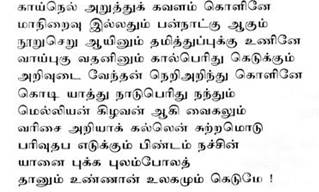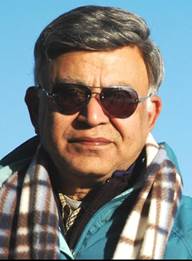Archive for category October 2014
The High-Stakes Poker Game in World Trade
Posted by admin in October 2014 on October 2, 2014
  By Kollengode S Venkataraman
e-mail: Â ThePatrika@aol.com
In July India’s newly elected Modi government blocked what is known in the arcane world of global trade as the Trade Facilitation Agreement (TFA). Key elements of the TFA are reducing import tariffs, bureaucratic delays and subsidies to farming in member countries.
The details of the World Trade Organization’s TFA were agreed to in the ministerial meeting in Bali in December 2013 with India participating under Manmohan Singh’s government. Though India agreed to the TFA, it also wanted the WTO to simultaneously address India’s need for food subsidies. These subsidies are lifelines for the millions and millions of subsistence farmers worldwide. Another issue is the stockpiling of food grains as an insurance against famines/droughts. Signing this by the 160-strong WTO countries (out of 180-plus UN members) was thought to be a formality. However, the WTO did not address these issues. So India under Modi’s government, blocked the ratification of TFA. Several non-G-8 members except China, Brazil, Pakistan, and Thailand supported India.
The stockpiling of food grains is important to India given the unpredictable monsoons and the on-again-off-again droughts. Granted, India’s cantankerous and corrupt state governments need to better manage their water resources and improve the productivity in farming, but this will take time. With the chronic threat of droughts, if not famines, the problem for India is here and now.
But protection from cheaper imports always gives complacency for the local industries. India’s economic stagnation before 1990 itself is an example of this. That is India’s dilemma.
For the uninformed, India, along with the other BRICS nations and the ASEAN nations, among others, are now called Newly Industrialized Countries. The bottom in this classification is LCDs or the Least Developed Countries, mostly in Sub-Saharan Africa, and Nepal, Afghanistan, Bhutan, Myanmar… Recognizing the unique problems of LCDs, the WTO affirmed that all nations will provide duty- and quota-free market access for goods from LCDs.
That India wants to stock-pile food as insurance against famine would be understandable if only one cares to know how India has been ravaged by famines. Here are the big ones in a long list:
♠  The Bengal Famine of 1770 during the Mughal Empire-East India Company transition. Ten million people died. Bengal’s population was reduced by 33%. Neglect by the rulers was a main cause.
♠  The Great Famine of 1876–78 in South India under the British Occupation. 5.5 million people died. With South India’s population 50 to 60 million then, 10% of the people, mostly the poor, died.
♠  Bengal’s man-made famine in 1943 during WW II under the British rule. Two million deaths. Bengal’s population was 60 million.
â™ Â Â Bangladesh famine of 1974. One million died.
With the democratically elected governments in India, large-scale famine-related deaths today would end in a bloody revolution.
In the early 1960s many parts of India were in severe drought. With Jawaharlal Nehru’s Congress government mismanaging the farming sector’s multi-faceted needs, India went begging for food all over the world at a time when nearly 60% of Indians were engaged in farming. India has not forgotten the embarrassment and shame.
South and Southeast Asia depend on monsoon rains for farming. Every April/May, Indian meteorologists closely follow the weather pattern in the Philippines region to predict the arrival and scale of the monsoon in India and warn the governments on shortfalls in rain and potentials for droughts. If the monsoon is delayed or is weak, it is front page news today even in India’s tech-savvy business publications. India’s arid regions — the Dakshin (Deccan) Plateau, the states of Bihar, Odisha, even many river deltas — go through droughts when the monsoon falters.
In recent years, many farmers in Andhra Pradesh, Maharashtra and other places got into heavy debt to pay for the costly genetically modified seeds they need to buy from big overseas companies for every planting season. Many killed themselves because there was no way to get out of their debt from their low-profit-margin harvests.
In India today 40% of the population lives in rural and semi urban areas; 25% of the population or 300 million — equivalent to the entire population of the US — is engaged in farming. So, Indian elected officials have every reason to safeguard their farming sector for their national and social interests — and for their political survival. For India, food security is its national security. Even military comes only next.
Besides, Indian farmers already depend on big corporations for a whole range of supplies: fertilizers weed killers and pesticides, pumps, farm equipment, and diesel… … and on government for electricity and water irrigated through canals.
So, in Australia, before the July 31 deadline for the TFA signing, India held its ground: “The way things are moving, there is no way [India] can agree to the trade facilitation agreement being pushed by the developed nations… Food security has always been India’s main concern and this time we are not going to concede,†and “[It] will be really difficult for India to sign the TFA till WTO [is] ready to discuss a permanent solution of food subsidies and stockpiling of food grains.â€
Remember, in the industrialized economies, only 2 to 3% of the population is directly engaged in farming, which is an incredibly energy- and resource-intensive and fully mechanized enterprise. In the US, corporate farming has all but eliminated family-owned farmers. And the farming industry, owned by large corporations, is still subsidized with billions and billions of dollars. The US taxpayers spend $14 billion every year insuring farmers against loss of crop or income. And often, farmers are paid for every acre of the land they leave fallow.
Often, with such subsidies, the G-8 (and other countries as well) dump their farm products at prices below their production costs to Africa and other poorer nations, where farming is pursued by many just to survive.
With great irony and sarcasm, Joseph Stiglitz in NYT Nov 16, 2013 summarized the situation thus: “We [the US government] spend billions every year on farm subsidies, many of which help wealthy commercial operations to plant more crops than we need. The glut depresses world crop prices, harming farmers in developing countries.â€
Further, in the US, over 40 million people living below the official poverty line receive tax-payer funded Food Stamps (called Supplemental Nutrition Assistance Program). This is valued at $70 billion/year, or $1750 per recipient. It is noble that the government is taking care of the poor through these programs. After all, we are the richest, technically and militarily the most powerful country on earth.
People on Food Stamps can use them only to buy staples — breads, cheese, meat, vegetables, cereals, milk, eggs, etc. So, the indirect beneficiaries of the Food Stamps are the big agribusinesses who are assured of $70 billion business per year. This is a form of farm subsidy. Similar subsidies for agribusinesses are entrenched in all modern nation-states.
In addition, the TFA agreement limits the value of food subsidies to 10% of the total value of food grain production. India is flexing its muscle on this issue because the subsidies will be calculated taking 1986 as the base year. In India, where inflation is running at 6 to 7% a year, 1986 as the baseline is meaningless, even laughable.
The TFA, it is believed, would add over $1 trillion to the GDPs worldwide creating 21 million jobs. But the operative word in WTO is Trade, not farming. As every farmer in India knows, the beneficiaries in any market situation — glut or scarcity — are the wholesale and retail traders. The subsistence farmers only see small slivers of profits in good times, but are hit hard during droughts.
In the Chicago Mercantile Exchange, the largest trading place for agribusiness where all farm products are traded — grains, beans, poultry, beef, eggs, milk, cheese, even alfalfa-hay — billions are made and lost every day speculating on everything affecting any aspects of farming. So, if the TFA is ratified, subsistence farmers worldwide would need to deal with speculative traders on a global scale.
The rich and powerful members of the WTO worry that they would lose control in global trade in agribusiness if the TFA is not ratified. But poorer nations see the TFA as an effort by developed countries to access vast markets in their growing economies. Because of this irreconcilable built-in conflict, each group negotiates for its advantage. There is no altruism here. US Ambassador Michael Punke warned the WTO in Geneva, “Today, we are extremely discouraged that a small handful of members… … are ready to walk away from their commitments… … Bali agreement, to kill the power of that good faith and goodwill we all shared, to flip the lights in this building back to dark.â€
Geopolitically speaking, the G-8 members have been at this game for years and years dictating to other nations on monetary, economic, military, and political issues. When they are on the receiving end, it hurts them.
What is worrying them is that emerging bilateral and regional free trade agreements will weaken the reach of the WTO. But these regional/bilateral trade arrangements make sense given the regional nature of rainfall, weather patterns, biodiversity, ecology, transportation, population density, culture, lifestyles and even food habits. So, putting a brake on the WTO’s ambitious FTA may not be all that bad—it may even be a good thing.
This time, the Big Boys at the WTO are dismayed that India is not blinking in the high-stakes poker game. Even though they threatened to go ahead with the TFA with or without India, they cannot simply ignore India geopolitically. India houses 1/6th of the world population; has been a stable democracy with a disciplined military that has no ambition for political power; has a large technical talents pool; and offers a countervailing force, partially in any case, for China’s ambition as a global power. India also offers limitless opportunities for foreign direct investments in many sectors, whose beneficiaries are businesses in the G-8 countries. That is their dilemma.   ï®
India Day 2014 Celebrated With the Usual Gusto
Posted by admin in October 2014 on October 2, 2014
By David Downey     e-mail: davidpdowney6@gmail.com
Note: David Downey, a recent graduate from the Dietrich School of Arts and Sciences at the University of Pittsburgh, seeks work in academic or scholarship administration.
Late summer once again brought the India Day celebration to the Cathedral of Learning at the University of Pittsburgh. On Sunday, August 17, the Indian diaspora and curious passersby gathered to celebrate 67 years of Indian independence. The theme of this year’s event was Punjab and its leaders who fought for their political and religious freedom and also for others’ freedom on matters of faith.
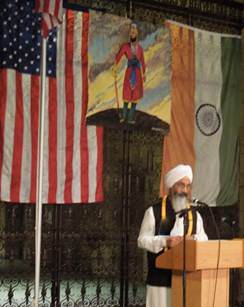
Gyani Sucha Singh of the Gurudwara in Monroeville addressing the gathering in the function. The imposing portrait of Guru Gobind Singh in the backdrop is by Mahendra Shah.
The overcast sky withheld its rain. And the sun didn’t need to be shining as the parade around the Cathedral lit up the gloomy afternoon with joyous song and dance with Keerti Gulati and Sumedha Nagpal as emcees. At the conclusion of the parade, everyone crowded inside to absorb the ambience with performances, speeches, and the aroma of food. Past the hoisting of both the Indian and American flags and singing their national anthems, Kalpana Ramgopal and Parth Bharill emceed the program.
The speeches were heartfelt and sincere and brief for the most part. First was Patrick Gallagher, the new chancellor of the University of Pittsburgh. Having been at the job for only two weeks, the India Day was one of the first events for Chancellor Gallagher to represent the University.
County Chief Executive Rich Fitzgerald also spoke briefly, thanking the Indian community of Pittsburgh for its ongoing contribution to the region’s vitality, officially proclaiming August 17th to be India Day in Allegheny County. He said Indian-Americans “have been absolutely instrumental in the moving forward of what Pittsburgh has become… not just economically, but culturally and in quality of life.â€
Gyani Sucha Singh, the Granthi — the trained Sikh teacher who explains the Adi Granth to his audience — at the Sikh Gurudwara, elegantly and passionately told his audience the impact of the Sikhs’ 10th Guru, Guru Gobind Singh of the 17th century, in the history of Punjab.
Mayor Bill Peduto, a well-known face in India Day events, was not scheduled to be present because of scheduling conflicts. However, he made a brief appearance addressing the young girls and women in the audience, saying they should get inspiration from the life of Pittsburgh’s first woman Mayor Sophie Masloff, who had passed away the previous night.
Later, Ashok Trivedi, Co-Founder of iGATE, spoke at length about India’s political and economic struggles & successes. Trivedi both challenged and addressed the difficult issues in a global economy.
The term culture can denote many elements of life, but India Day celebrated culture in every way. The performing arts were the most exciting events inside the Cathedral. Dances by the students of Jaya Mani, Shambhavi Desai, and Nandini Mandal involved skill to maintain rhythm and control the movement of every limb, which are impressive all by themslves, but the groups’ synchronization made the performances astounding.
Culture was visually apparent in the color, design, and styles of dresses worn by the festivalgoers. The unlimited variations stood as a reminder to the durable creativity of those who craft Indian clothing. There was not one style or one color more common than another. Traditional dresses could be found on men and women, young and old, showing the timeless appeal and joy brought by the distinctly Indian attire.
Songs rendered in group and solo in Hindi and Tamil nicely complemented the dances.
Food is always a distinguishing feature of the Indian culture. The food stand managed by All India Authentic Cuisine with the usual items operated without a lull. The appeal of Indian food is becoming widely recognized, considering the success of the recent American film The One-Hundred Foot Journey, aboyt an Indian family opening a restaurant in France.
And there were booths around the outer edges of the festival area on many activities — The Art of Living, Overseas Volunteer for a Better India, South Asian Marrow Association of Recruiters (SAMAR), Association for India’s Development (AID), Pittsburgh Indian Community & Friends 5K Charity Walk/Run + Fun, Ekal Vidyalaya, Ramakrishna Ashrama Pittsburgh, Pittsburgh Sikh Gurdwara, and Pittsburgh Tamil Sangam. There were booths on saris, lehngas, kurtas… … even mehndi designs.
The finale was a bhangra item by Monica Srinivasa and the Tri-State-Sikh Cultural Society, a high-level-competing troupe. The high-decibel bhangra was a perfect end to the evening, whose theme was Punjab. Â Â ï®
How to Collect Taxes — A Vignette from the Indian Literature
Posted by admin in October 2014 on October 2, 2014
Kollengode S. Venkataraman
e-mail: Â ThePatrika@aol.com
Corruption and bureaucratic excesses have been the bane of all kingdoms. This has been the case ever since mankind organized itself into societies seeking help from local leaders by paying them protection money against thieves and thugs to guard their homes, women, lands and harvests from pillage. That is the beginning of taxes.
Soon, much to their dismay, the villagers saw that the servants of the kings themselves becoming the exploiters. Sometimes they were as bad as the thugs from whom the villagers were seeking protection. Such was the case in the ancient Tamil country, nearly 2000 years ago. Many people say, it is the same story even today not only in the Tamil Country, but also in much of India.
Enter Pisirandaiyaar, a courageous and socially conscious poet in such a scene. The poet confronts his Pandya King, Arivudai-nambi, subtly telling him of the excesses of his tax collectors towards his citizens. Here is the Tamil original in classic Tamil from Puranaanooru, dated earlier to the start of the Common Era (that is, 2000 years earlier to our time):
This Tamil is very different even from today’s formal Tamil, not to speak of the spoken masala Tamil on the streets. Pisirandaiyaar uses an excellent agrarian imagery to tell his king on his citizens suffering under his tax collectors’ excesses. Here is the sum and substance of the Tamil verse: 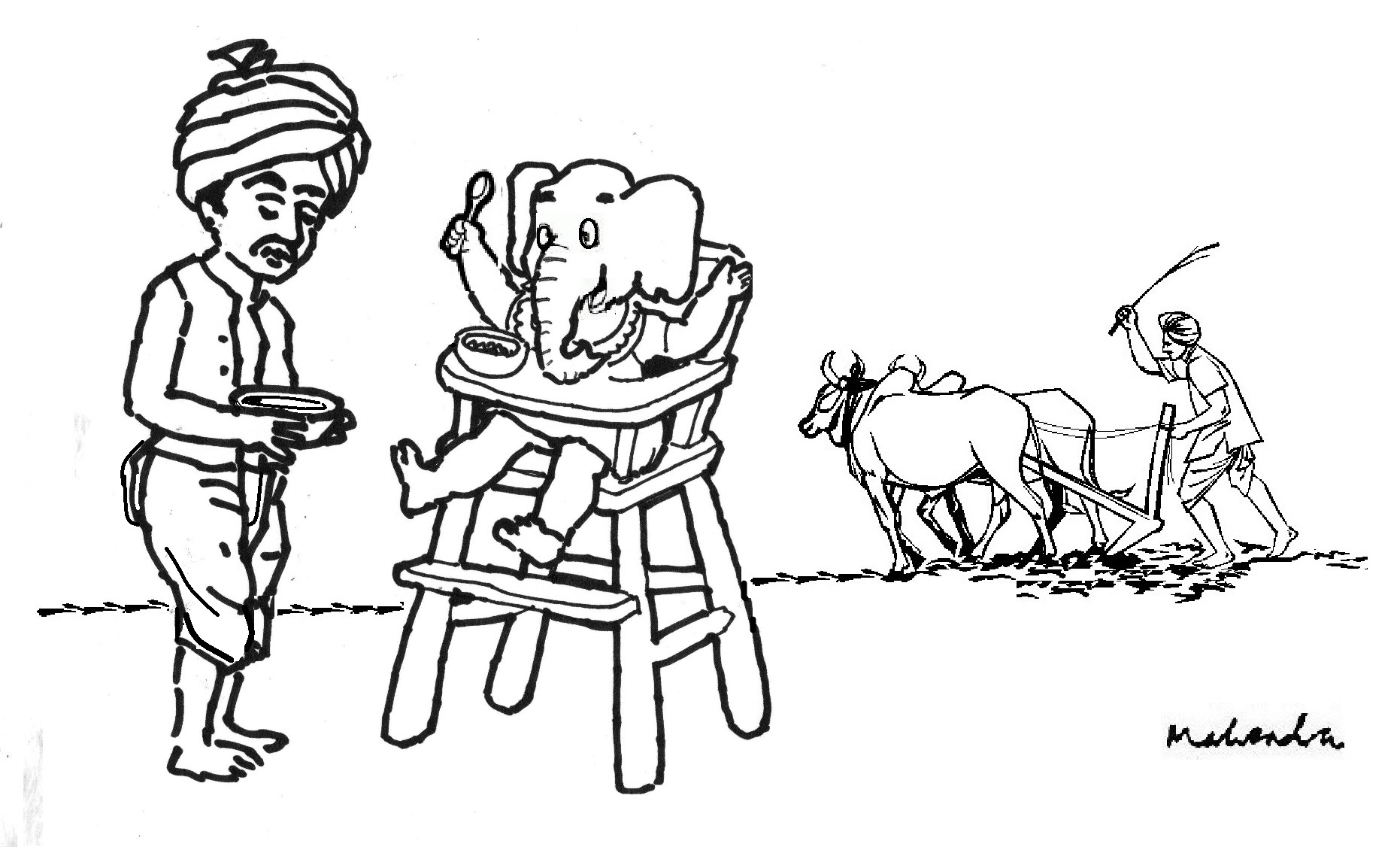
“If one harvests rice and feeds an elephant with the rice cooked and made into large balls, even from a small field [a fraction of an acre], one can feed the elephant for very many days.
“However, if one lets the elephant get into the paddy field and eat, even several acres of land cannot feed the beast. For every morsel of rice the elephant puts into its mouth, several ten folds are destroyed by its massive legs stomping on the harvest.
“Knowing this, a wise king is careful while collecting taxes from citizens. Then, even with low taxes, his kingdom prospers.
“However, if the king is weak, listens to his bad advisers, and recklessly lets his underlings to extract high taxes from citizens under duress, his kingdom would be destroyed the same way the elephant destroys the paddy field when allowed to enter it to feed for itself.”
Note that Pisirandaiyaar, over 2000 years ago, compared the bureaucracy of his time to an elephant, an imagery used even today even  in countries like the US and Germany, and France where elephants are not native to the soil.   ï®
Two Masters in A Flat Jugalbandi
Posted by admin in October 2014 on October 2, 2014
By Samar Saha
e-mail: Â Â samar_k_saha@yahoo.com
Recently Pittsburghers had a rare opportunity to listen to two musical giants in one session in a recital arranged by the Pandit Jasraj Institute of Music on Saturday, July 19, 2014 at the Hillman Center of Performing Arts of Shadyside Academy. It was advertised as one-of-a-kind performance titled Alap-Jugalbandi between Padma Vibhushan Pt. Jasraj, the leading Hindustani vocalist; and Padma Bhushan Dr. L. Subramaniam, the leading Karnatic violinist. Music lovers were ecstatic waiting for the ultimate joy.
Why the expectation of ecstasy? With Jugalbandi literally meaning “entwined twins,†in the pan-Indian classical music recitals pairing two artistes, it has come to mean a mix of the best in both musical systems – either instrumental or vocal or any combination thereof.
Many relate to the Hindustani and Karnatic music systems with emotions — as “twins†born, nourished and brought up by the same loving mother, but departing in their adulthood like two streams — one keeping the original pure form and the other evolving into a different form by interaction with other musical systems. So, many expected the recital to bring the two genres of music together through the facile skills of the two veterans. The limitations associated with each system were forgotten. The general exuberant expectation was that these titans would overcome all constraints with their intrinsic understanding of the other’s system and present a performance that would be worth dying for.
The performance began close to the advertised start time of 6:30 PM, quite uncommon with Indian musical events. Pandita Tripti Mukherjee started the evening with Narayan, Ganesh and Kali Vandanas with Asish Sinha on the tabla and vocal support from Paromita Deshmukh, Nidrita Mitra Sinha, Anupama Mahajan, Babeena Sharma, and Sambhavi Desai. The invocations were both contemplative and soothing, setting up the mahaul (ambience) for the better and greater things to come.
As the audience settled down, the next artiste, the violinist Ambi Subramaniam, took the stage with Mahesh Krishnamurty accompanying on the mrdangam. The youngest son of Dr. Subramaniam, Ambi was proclaimed the ‘New King of Indian Classical Music’ by the Times of India when he was sixteen. Ambi began his recital with a Ganesh Vandana in a very auspicious Raga Nattai (close to Raga Jog in Hindustani music). He finished his performance with a Tyagaraja krti in Raga Nagaswaravali (close to Hindustani Khamaj) in Adi tala. Starting with a slow alapana (alap), the recital ended with a superfast and aggressive Charana. A few Karnatic music lovers expressed disappointment at this style of speed. One such connoisseur described Ambi’s closing piece as a “rock-concert type high-decibel ending†seldom done in an all-Indian traditional recital. It satisfied neither the puritans nor set the stage for the main event properly.
The main event was Alap Jugalbandi, which the MC announced, “will be presented in an extended Alap form but without any percussion accompaniment. No one has attempted a Jugalbandi like this except once in Chennai by the same artists.â€
Expectations surged. Would it be another wonder like Jasrangi Jugalbandi? Or would it be another blend where listeners could appreciate the mix of Hindustani and Karnatic styles?
The artistes did not explain how the Jugalbandi would unfold. Jasraj-ji started with Ati Vilambit (very slow) alap in the Raga Puriya Dhaneswari (Karnatic equivalent Pantuvarali), a raga most suited when we transition from evening to night. The choice could not have been any better.
A few minutes into the alap, it appeared Jasraj-ji was struggling with his voice. The optimist in me said, “He’ll come back roaring as soon as his voice clears.†He has done it before. Subramaniam-ji provided the needed support but his role appeared more as an accompanist. I had exepected the violin to pick up Pantuvarali, but that did not happen. Jasraj-ji completed the long alap apologizing “Thodi Taqlif ho rahi thi†(Was having some difficulty).
The Jugalbandi continued in Raga Malika seamlessly gliding from one Raga to the other – starting with Kaafi, moving into Bahar, and ending with Bhairavi. As he wove through the ragas, exposing the mukhras (face) of each, Subramaniam-ji followed on his magic violin with pleasant and melodious improvisations. The main event lasted about 1-1/2 hours.
The unfulfilled expectations from this pricey concert was on each face as the silent crowd left. I sympathize with the frailties of old age — particularly with the voice of an octogenarian veteran vocalist. We who adore Jasraj-ji with pride were wondering — How was this veteran feeling at the end of the show?Â
The idea of Alap Jugalbandi without the percussion instruments may have been fine, but the execution came out poorly. A distraught friend told me, “To pull off the best in a Jugalbandi like this, the artistes need more than raga and its presentation. The listeners like to witness harmony, camaraderie and musical repartee between the artistes,†something that just was not there.
He added, “You need a Plan B, if things start waveringâ€. There lies a lesson for the concert organizers. ï®
Obituary: Vimala Nayak August 1947 to June 2014
Posted by admin in October 2014 on October 2, 2014
Anchor to Her Husband, Entrepreneur
 Vimala Nayak, a long-time resident here and wife of Dr. Narayan Nayak, died on June 9, 2014 in her hometown of Karkala, near Mangalore, Karnataka, India, after a seven-year bout with multiple myeloma. This is a type of cancer affecting the bone marrow for which there is no cure.
Vimala Nayak, a long-time resident here and wife of Dr. Narayan Nayak, died on June 9, 2014 in her hometown of Karkala, near Mangalore, Karnataka, India, after a seven-year bout with multiple myeloma. This is a type of cancer affecting the bone marrow for which there is no cure.
She was born in 1947 in the Kukkundoor Kamath family renowned for their philanthropy and commitment to elementary and secondary education even as early as the late 19th century. She continued this tradition in a small way by starting midday meals for 200 school children in her home town, which now has grown to feed over 2000 kids.
In 1966, she married Dr. Narayan Nayak, also from her home-town, who was in the Indian military serving in Ladakh. Nayak’s family was in the retail trade in saris. Dr. Nayak came to the US in 1970 because of the shortage of medical professionals in the US, starting his residency at the McKeesport Hospital.
Vimala joined her husband a year later in 1971 with their three kids — Vidya, Narasimha, and Suri. She found her hands full in the new unfamiliar place, raising children with very few Indians here then. As Dr. Nayak set up his practice through the rigors of his neurosurgery internship, board certification, and private practice, Vimala was the sheet anchor for her husband and family well into the 1990s.
Later when Nayak practiced in Johnstown, PA, Vimala stayed back in Pittsburgh, volunteering at the S.V. Temple in Penn Hills, later becoming a member of its governing bodies, and its Treasurer.
With her kids leaving home, she had plenty of time on her hands. Instead of living in the comforts of her suburban life, Vimala, with support from her husband, ventured into a small retail business of selling saris imported from India with help from their family contacts back in India. She ran the business through her illness.
Kanaka Prabhu, Vimala’s long-time associate, said, “Vimala, known for her pleasant disposition, was well-liked by her friends and clients. She was known for her honesty and integrity.â€
Though she lived in relative comfort in American suburbia on one level, she stoically endured with great dignity the heartaches life threw her way.
Her son Narasimha performed the Hindu cremation rites for Vimala at Karkala, Karnataka, India. Vimala leaves behind her grief-stricken husband Narayan Nayak, now retired, of Pittsburgh; Vidya, her daughter; Louis Craig, her son-in-law; Narasimha, her son; her two grandchildren Louie Jr. and Maya. She also leaves behind a large number of friends among Indian-Americans, and also in the medical fraternity by association through her husband. She was a great supporter of the Patrika.   — By Kollengode S Venkataraman    ï®
Obituary: Shikha Mullick (1950 to 2014)
Posted by admin in October 2014 on October 2, 2014
Shikha Mullick (1950 to 2014) Â Â Â Battled Breast Cancer with Courage and Faith
 Mrs. Shikha Mullick passed away on January 28, 2014 after giving a determined fight to her breast cancer for almost twelve years. During her illness she was always calm and accepting with faith in God. She knew the fate of this ill-luck and deadly disease from the time she was diagnosed with Stage II–III breast cancer. Shikha took all the possible treatments available and tolerated the harsh side effects of chemo and radiation therapies with calmness and a smile on her face.
Mrs. Shikha Mullick passed away on January 28, 2014 after giving a determined fight to her breast cancer for almost twelve years. During her illness she was always calm and accepting with faith in God. She knew the fate of this ill-luck and deadly disease from the time she was diagnosed with Stage II–III breast cancer. Shikha took all the possible treatments available and tolerated the harsh side effects of chemo and radiation therapies with calmness and a smile on her face.
She continued her work in the office and at home and treated everybody with love and respect. Shikha was an ardent devotee of Satya Sai Baba who fulfilled her wish of watching her son’s marriage. Shikha was very sick just a week before the marriage date and was to be hospitalized but she insisted on staying in home and going to Houston, TX to attend the wedding. Just two days before the marriage she felt comfortable enough to travel all the way to Texas, and attended the marriage with great joy. A week after her return to Pittsburgh, she passed away. This was God’s miracle and Shikha’s courage and faith in God.
Shikha Mullick, wife of Dr. Prakash Mullick and mother of Tuli and Ronne and mother-in-law of Dr.Tania K.Mullick was born in India in December1950. She had a Master’s degree in English Literature, Bachelor’s in Education and a Diploma in Vocal Music from Sangeet Academy of India. She was a talented singer. Shikha worked as Finance Manager at SourcePRO Inc. in Pittsburgh.   — By a Family Friend
Modi’s Refreshing Address from the Red Fort
Posted by admin in October 2014 on October 2, 2014
Kollengode S. Venkataraman
e-mail: Â ThePatrika@aol.com
This August 15, from the ramparts of the majestic Lal Kila (Red Fort), Narendra Modi made his first address as Prime Minister of India to the nation and the world at large as is the custom on India’s independence day. The speech, though did not contain major initiatives that people were looking for, was refreshing nevertheless on several key elements:
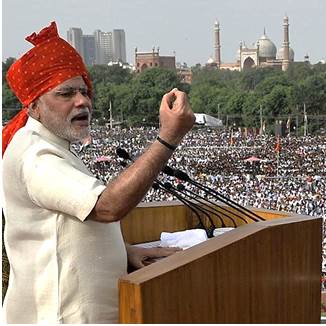 For starters, with many diplomatic dignitaries and global business leaders were in his audience, he did away with the bullet-proof shield on the podium as has been the practice for the last two decades. With no embarrassment, he addressed head on several key problems afflicting India that previous prime ministers felt uncomfortable handling from the grandeur of the Red Fort. That required great conviction. Here are the points Modi covered:
For starters, with many diplomatic dignitaries and global business leaders were in his audience, he did away with the bullet-proof shield on the podium as has been the practice for the last two decades. With no embarrassment, he addressed head on several key problems afflicting India that previous prime ministers felt uncomfortable handling from the grandeur of the Red Fort. That required great conviction. Here are the points Modi covered:
♣   The lack of social hygiene and civic sense among Indians. He did not mince words in telling his citizens what everybody sees. Even educated Indians toss garbage on the streets even as they keep their personal space in homes and offices spic-and-span. For a country that emphasizes shuddham in scriptures, this has been an embarrassment. Modi declared that every parliamentary constituency will have one village as a model for cleanliness, and made its member of the parliament to lead in this effort.
♣   Modi declared that every school in India will have separate urinals and rest rooms for girls within a year. How many urban Indians in the middle class even know that in rural and interior India, schools do not often have separate rest rooms for girls? This is one reason why girls drop out of school. He sought partnership from Corporate India in this.
♣   Another important point Modi addressed was on the skewed gender ratio, with only 940 girls for every 1000 boys on the average because of gender selection before and during pregnancy — even killing of infant girls. Nature keeps this ratio within tight range, around 1050 boys for every 1000 girls. If 940 girls for 1000 boys is the average, it is obvious that in parts of India, it has to be higher. Here are the numbers: Punjab (893 girls), Gujarat (920 girls), Haryana (877 girls), and in some social subgroups, this ratio will be far worse, may be even 800 girls for 1000 boys in the extreme. As we wrote earlier, this has huge social consequences — crimes and violence against women, abduction of married women in rural areas, changes in the sexual mores among people, and many others.
♣   He also talked on violence against women. Instead of looking at this only as crimes, he went to the root cause on how people raise children in India. He declared the obvious: After all, every young man who rapes and molests girls is someone else’s son. How is that, he asked, we do not teach boys good public behavior the same way we raise girls at home? That was his rhetorical question that should make every Indian think.
♣   The absence of bellicosity in his address was noteworthy. Another feature was that he naturally made references to Indian thinkers who have influenced India in big ways — Aurabindo Ghosh, Swami Vivekananda, Jayaprakash Nayaran and Vallabhbhai Patel. With Congress prime ministers, all the encomiums were heaped only on the Nehru-Gandhi dynasty. For them, there were no other Indian seminal thinkers worthy of recognition except perhaps the Mahatma. So total has been the Congress cronies’ sycophancy towards the Nehru-Indira-Rajiv-Sonia-Rahul lineage, to which now they have desperately added Priyanka as their savior. Indian regional parties simply emulated the Congress model in sycophancy.
The only big policy announcement in Modi’s speech was that the Indian Planning Commission, a relic of the Nehruvian Socialism, would be dissolved. Finally.
So, Narendra Modi deserves credit for his candor. But candor in exhorting his citizens is one thing, but getting the job done through the deeply entrenched bureaucracy is another. For there is an old saying in Tamil: A bureaucratic egg can break a boulder. One hopes that Modi will prevent the bureaucratic eggs in his administration from breaking the boulders of his fresh ideas.    ï®
What is One’s Identity?
Posted by admin in October 2014 on October 2, 2014
By Kollengode S Venkataraman
e-mail: Â ThePatrika@aol.com
The latest trend in India is Bollywood actors and industrialists owning sports teams. When they own the team, they also “own†the players, like feudal lords. Indian dailies write about players being “auctioned†like Jersey cows or race horses. It sarted with cricket and now has spread to the uniquely Indian sport Kabbaddi, with players paid in lakhs of rupees.
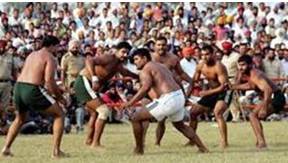 Kabbaddi tests the players’ physical strength, endurance, and lung capacity on how long you can hold your breath under stress. It is a team contact sport far more physical and aggressive than the American football. Obviously, the anglicized, urban Indians are not into it. In the Indian subcontinent kabbaddi players are, by and large, rural and rustic.
Kabbaddi tests the players’ physical strength, endurance, and lung capacity on how long you can hold your breath under stress. It is a team contact sport far more physical and aggressive than the American football. Obviously, the anglicized, urban Indians are not into it. In the Indian subcontinent kabbaddi players are, by and large, rural and rustic.
Recently, Kabbaddi matches were organized between teams from India and Pakistan. The Lahore Lions, the Kabbaddi team from Pakistani Punjab, was in New Delhi to play competitive matches. The players went around seeing Delhi. Reporters asked them what more they wanted to see. Their replies (Hindustan Times (August 26, 2014):
Akmal Shahzad Dogar: “My native village is in India. It is in Tarn Taran Sahib district in Amritsar. I really want to go there, but it is difficult to get permission… Most of my team mates have their native villages in India… They too… dream of visiting their villages.â€
Babar Waseem Gujjar, captain of the Lahore Lions: “I have my village in Ludhiana district. It is called Burj Hari Singh… my family members too want to go there.â€
These well-built muscular men in their 20s are third or fourth generation “native†Pakistanis born and raised there. For decades the Pakistani establishment has been indoctrinating them in schools, through their media and mullahs against everything about India and Indian. Yet, for many Pakistanis their affiliation is still with the native villages in India their great grandparents left during the 1947 Partition, a man-made disaster arbitrarily carried out in great haste by the British.
It is worth recalling here Wali Khan, a Pashtun nationalist, the son of Khan Abdul Ghaffar Khan, said in the 1980s: “I have been a Pashtun for 4,000 years, a Muslim for 1,400 years and a Pakistani for 40 years.†  ï®

